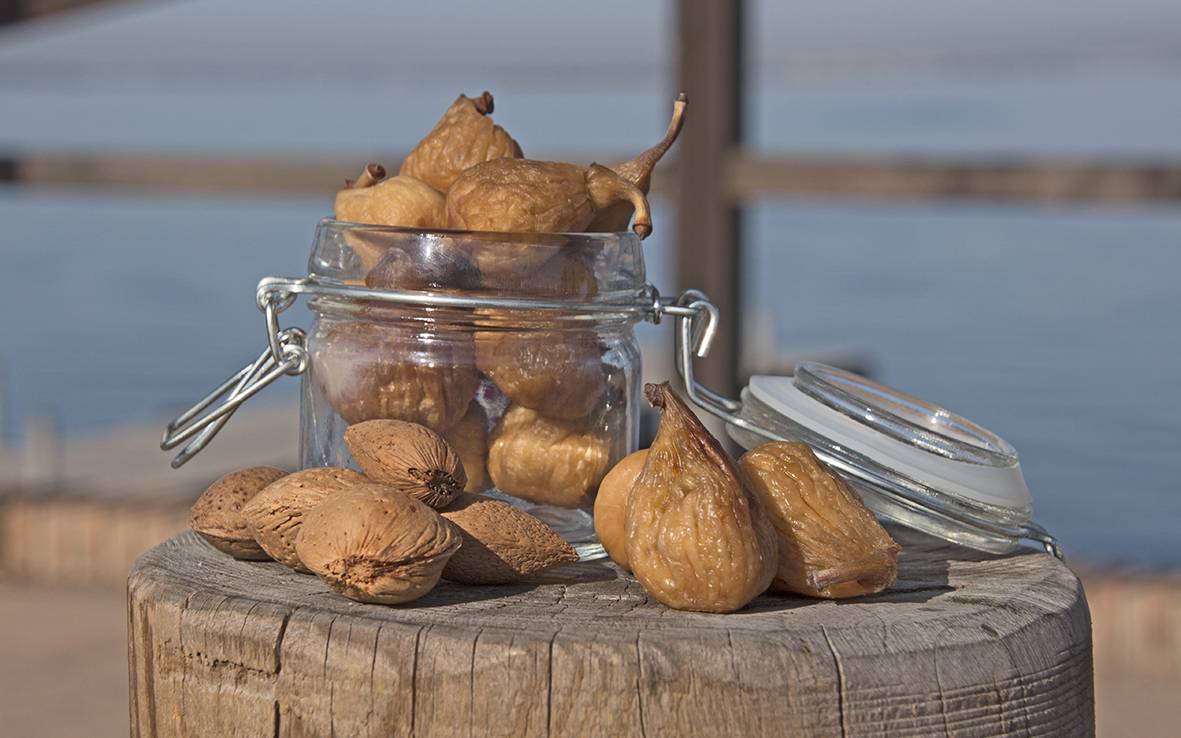When is fig season?
There are many types of figs, such as the Pajarero (or Calabacita) fig, San Antonio fig, Nazareth, Brown Turkey, Lampaga, Albacor, Cuello Dama Blanco, Banane, Picholetera, and many more. Although all ripen in the summer season, we can find differences between them. Also, there are trees which even offer us two different yields during the year, one closely following the other. This occurs in the case of biferous fig trees, on which both figs and brebas grow. This article intends to explain when to harvest figs (based on the fig season) and answer other questions which may be of interest; for example, after how many years the fig tree bears fruit. Here you can find out everything you need to know about fig season. Let’s get to it!
Fig season: When to harvest figs?
There is nothing more gratifying than collecting the fruits from seeds sown, especially if they are foods which are as sweet, fresh and delicious as figs. Figs are compound or multiple fruits known as syconia. A syconium is a fruit with a fleshy, hollow receptacle covered with small achenes. In these, flowers grow on the interior, therefore inside figs we can find hundreds of small flowers which are what give them their exquisite flavour. Figs are one of the most delicious foods which exist, their freshness, sweetness, texture and the variety of presentations in which we can find them making them a unique fruit. Figs can be consumed either fresh or dried – the latter being the case of the pajarero fig – and we can find them in all kinds of confectionary, such as Pan de Higo or jams.
So when exactly is fig season? Fig season is from July to October, depending on the variety of fruit in question. Going into greater detail on the fig season, we can distinguish two periods, which are:
From July to September: Some varieties of figs can be harvested from July to September, as is the case for San Antonio and Brown Turkey figs.
From August to October: Generally, from the start of August until the end of October, as is the case for the Banane variety.
The difference is more or less one month, but it is important to pay attention to these dates and know what type of fig you are growing to be able to make the most of the harvest and obtain a larger quantity of fruit to enjoy in summer. It is also important to combine the first harvest of brebas with the second batch of figs, in case of biferous varieties of fig tree.
Brebas season: When to harvest brebas?
Although figs and brebas are often confused, in reality the fruits have significant differences from each other, above all their flavour, as figs are sweeter than brebas, but also colour and size. Brebas are syconus fruits which are grown on fig trees or breba trees – special trees which only produce brebas. The main difference between one fruit and the other is that brebas have a much longer ripening period than figs. In reality, brebas are figs which did not ripen in the previous season and which remain on the tree for longer. For the same reason, the breba season, or their harvesting period, differs from that of figs.
The breba season mainly corresponds to the months of June and July. This is why they are they are the first harvest of the year from biferous fig trees. Afterwards, in the same month of July or August, depending on the variety, the second season corresponding to fig collection takes place.
After how many years does the fig tree bear fruit?
Cultivating fig trees is a relatively easy process, regardless of all the details that must be taken into account for the fig tree to grow strong and healthy, such as pruning old branches, for example. It is a very resistant tree which endures extreme climates from -7ºC up to 40ºC. If your idea is to plant a fig tree to have figs at home, it is important for you to also know how many years the fig tree takes to bear fruit. In general, take into account that fig trees usually reach production maturity at between 5 and 8 years old. Also consider that the ripening of fruits is protracted and may last for 2 months or longer, depending on whether figs or brebas, or the two different syconia are grown.
With regard to the average height of fig trees, they usually reach 4 or 5 metres tall, though we can also find some varieties which can reach 10 metres tall, although this is not very common. If you are thinking of growing figs, you should know that they can be planted directly from the seeds in the fruit, and that you can also purchase them in specialised shops or as cuttings from other trees; they are very easy to transplant and root very well in the soil.
Precautions when harvesting figs
When harvesting figs it is important to take some tips into account. The first is that these trees are often visited by wasps, as they are very sweet fruits which appeal to these small insects. Sometimes wasps can be found around the fruit and sometimes inside them. This happens because female wasps deposit larvae inside the figs, as they are an inverted flower and not a fruit. For this reason, you must take care when harvesting these cherished and delicious fruits. Additionally, they must be harvested manually and carefully, as they are soft, delicate fruits. Furthermore, it is recommended to wear gloves as the fig tree produces latex when leaves, branches and fruit are cut, which may cause irritation on the skin, especially if you have an allergy. For the same reason, you should gently shake the fruit with your hand when you collect it.

